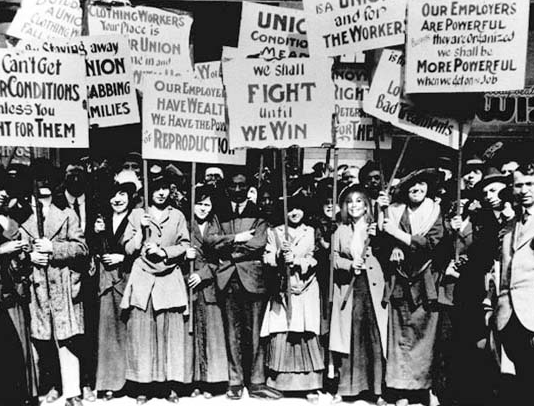Table of Contents
FLYING HIGH
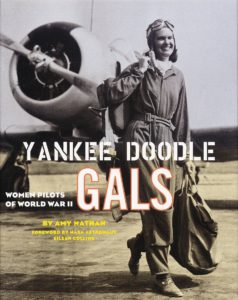
|
Amy Nathan’s Yankee Doodle Gals: Women Pilots of World War II (National Geographic Children’s Books, 2001) is a 96-page account of World War II’s Women’s Airforce Service Pilots (WASPs), punctuated with individual biographies and first-hand accounts, and illustrated with period photographs. Included is a supplementary resource list. For ages 10 and up. |
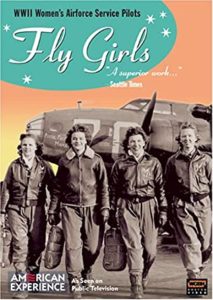 |
From the PBS American Experience series, Fly Girls (1999) is a 60-minute documentary on the WASPs and the part they played in World War II. The website includes a resource bibliography and a list of primary source materials (including letters, log book excerpts, and songs from the official WASP songbook). Available on DVD. |
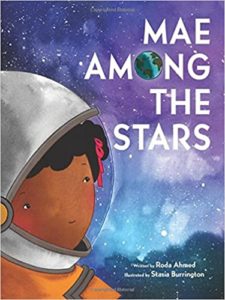 |
Roda Ahmed’s Mae Among the Stars (HarperCollins, 2018) is a lovely picture-book biography of Mae Jemison, the first African-American woman in space. For ages 4-8. |
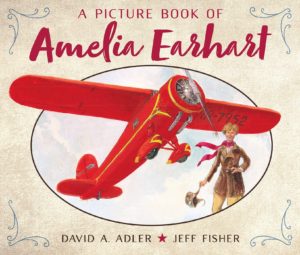
|
David A. Adler’s A Picture Book of Amelia Earhart (Holiday House, 1999) is a short simple biography, beginning with tomboy Amelia growing up in Kansas, where she built her own roller coaster with fence posts and roller skates, through her landmark flight across the Atlantic – the first woman to do this – in 1932. For ages 4-8. |
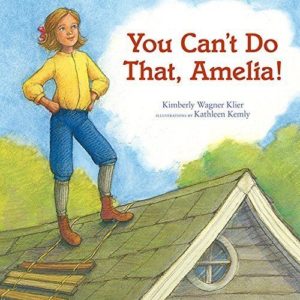
|
Kimberly Klier’s picture-book biography You Can’t Do That, Amelia! (Boyds Mills Press, 2008) emphasizes Amelia’s determination to pursue her dreams of flight, despite opposition from all around her – as all attempts are met with a chorus of “You can’t do that, Amelia!” (But Amelia did.) For ages 4-8. |
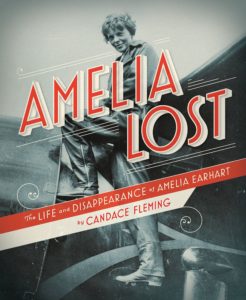
|
Candace Fleming’s award-winning Amelia Lost (Schwartz & Wade, 2011) tells, in alternating chapters, both the story of Earhart’s life and the story of the long search for her lost plane, after her disappearance in 1937. The book is illustrated with period photographs, maps, and pictures of artifacts, and peppered with intriguing fact boxes. For ages 8-13. |
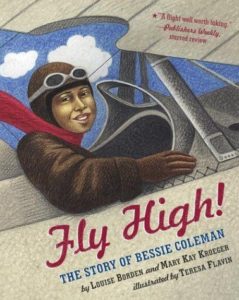 |
By Louise Borden and Mary Kay Kroeger, Fly High! is a picture-book biography of Bessie Coleman – born in 1898 in Waxahachie, Texas – who became the first African-American to earn a pilot’s license. For ages 8-11. |
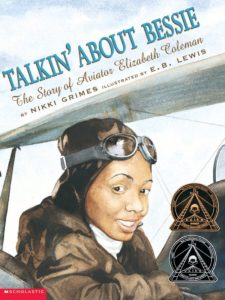 |
In Nikki Grimes’s Talkin’ About Bessie (Orchard Books, 2002), Bessie Coleman’s story is told in 21 different voices, as family members and friends gather at a funeral parlor to mourn Bessie’s death. (She died at the age of 34 in a plane crash). An interesting approach to biography for ages 8 and up. |
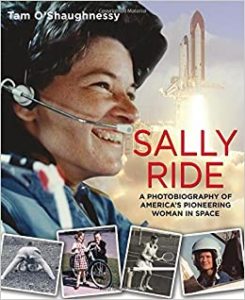 |
Tam O’Shaughnessy’s Sally Ride (Square Fish, 2017) is an award-winning photobiography of America’as first woman in Space – on board the Challenger in 1983. For ages 9 and up. |
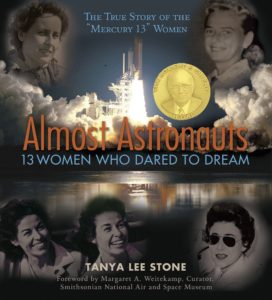
|
Tanya Lee Stone’s photo-illustrated Almost Astronauts (Candlewick, 2009) is the enthralling, exciting, and absolutely infuriating story of the thirteen highly qualified women who, in the early 1960s, attempted to become NASA astronauts. They faced overwhelming opposition and ultimately lost their battle – but not, as Stone points out, the war, since, inspired by their example, women did finally take their place in space. For ages 10 and up. |
SCIENCE, MEDICINE, INVENTION
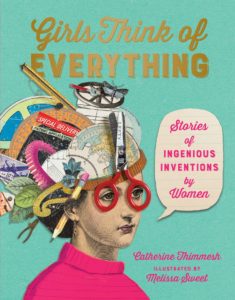
|
By Catherine Thimmesh, Girls Think of Everything (Sandpiper, 2002) is a fascinating collection of “Stories of Ingenious Inventions by Women,” with terrific (and inventive) collage illustrations by Melissa Sweet. The inventions? Everything from Kevlar and windshield wipers to the chocolate chip cookie. Included are a timeline and a resource list. For ages 8 and up. |
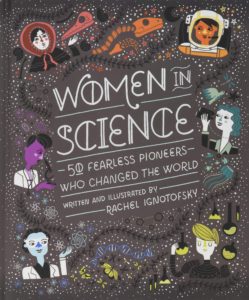 |
By Rachel Ignotofsky, Women in Science (Ten Speed Press, 2016) is the creatively designed story of 50 “fearless pioneers” in the fields of science, technology, engineering, and math. For ages 8-12. |
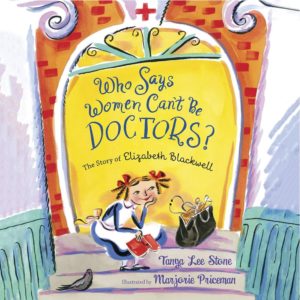
|
Tanya Lee Stone’s Who Says Women Can’t Be Doctors? (Henry Holt, 2013) is a picture-book biography of Elizabeth Blackwell who was determined to become a doctor in the early 1800s, at “a time when girls weren’t allowed to become doctors.” An inspiring story of triumph in the teeth of opposition, with appealing illustrations by Marjorie Priceman – whose pictures of feisty young Elizabeth with her hair in bouncy ringlets are priceless. For ages 5-8.
Also by Stone in the same format, see Who Says Women Can’t be Computer Programmers? (Henry Holt, 2018), the story of Ada Lovelace. |
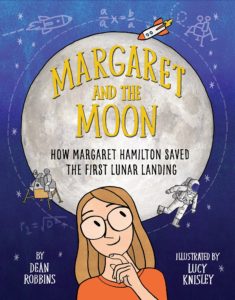 |
By Dean Robbins, Margaret and the Moon (Knopf, 2017) is the story of mathematician Margaret Hamilton, who created the code that allowed NASA to put men on the moon. For ages 5-8. |
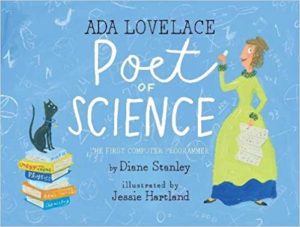
|
Diane Stanley’s Ada Lovelace, Poet of Science (Simon and Schuster, 2016) is a clever and delightful picture-book biography of the first computer programmer. For ages 5-9. |
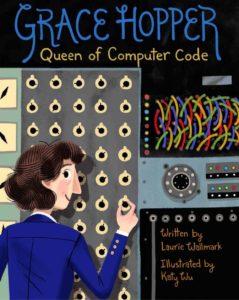 |
By Laurie Wallmark, Grace Hopper: Queen of Computer Code (Sterling, 2017) is the story of the brilliant computer scientist who – among much else – coined the term “computer bug.” And because of a real bug. For ages 5-9. |
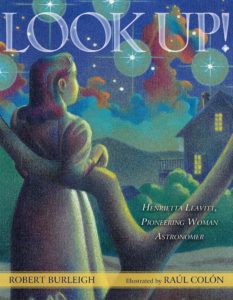 |
Robert Burleigh’s Look Up! (Simon & Schuster, 2013) is a lovely night-blue-dominated picture-book biography of Henrietta Leavitt (born in 1868) who – at a time when women were almost entirely barred from science – made discoveries that revolutionized astronomy. For ages 6-9. |
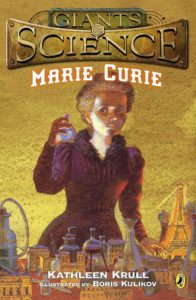
|
Kathleen Krull’s Marie Curie (Puffin, 2009) is an outstanding biography of the brilliant scientist who became the first woman to win a Nobel prize – in fact, two, in physics and in chemistry – for her studies of radioactivity, and her discoveries of two new elements, radium and polonium. (Nonetheless, the French Academy of Sciences denied her admission, shortsightedly announcing that “Women cannot be part of the Institute of France.”) For ages 9 and up. |
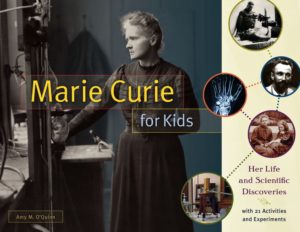
|
Amy M. O’Quinn’s Marie Curie for Kids (Chicago Review Press, 2016) covers Curie’s life with timelines, maps, period photos, fact boxes, and 21 assorted projects and activities, among them making elephant toothpaste and sunprints, conducting a Periodic Table scavenger hunt, and making a Marie Curie vision board. For ages 9 and up. |
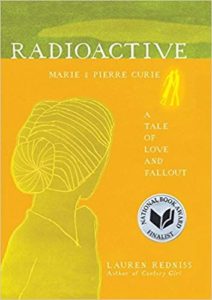
|
Lauren Redniss’s award-winning Radioactive (It Books, 2010) is a graphically spectacular “biography-in-collage” of Marie and Pierre Curie, covering their lives, work, and impact on the world. Redniss gathered her information from a phenomenal array of sources, including interviews with modern weapons experts and atom bomb survivors, and with Marie and Pierre’s granddaughter. A gorgeous book for teenagers and adults. |
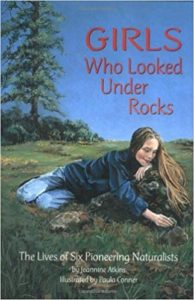 |
By Jeannine Atkins, Girls Who Looked Under Rocks (Dawn Publications, 2000) is a collective biography of six “pioneering naturalists,” among them Maria Sibylla Merian, a 17th-century painter of butterflies, Rachel Carson, and Jane Goodall. For ages 10 and up. |
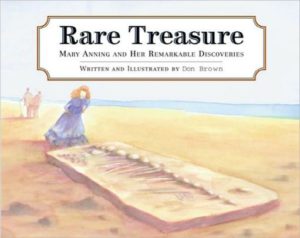
|
Don Brown’s Rare Treasure (Sandpiper, 2003) is a great picture-book biography of Mary Anning who – in the early 1800s, when she was just eleven – discovered the world’s first-known ichthyosaur skeleton in a cliff near her home on the coast of England. This was the first of her many landmark fossil finds (though Anning, as a woman, was unable to join scientific societies or receive credit for many of her discoveries). For ages 4-8. |
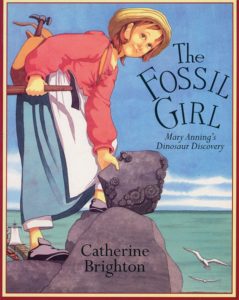 |
Catherine Brighton’s The Fossil Girl (Frances Lincoln Books, 2007) tells Mary Anning’s story in graphic-novel format for ages 5-9. |
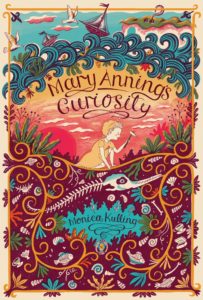 |
Monica Kulling’s Mary Anning’s Curiosity (Groundwood Books, 2017) is a fictionalized account of the famous fossilist’s 19th-century childhood in Lyme Regis. For ages 8-13. |
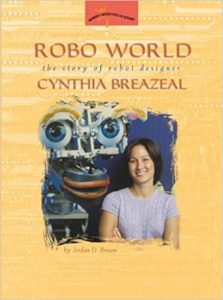
|
From the National Academy of Sciences, the Women’s Adventures in Science Series is an excellent collection of 128-page photo-illustrated biographies of modern women in different branches of science. Among the titles are Jordan Brown’s Robo World: The Story of Robot Designer Cynthia Brazeal; Lorraine Jean Hopping’s Bone Detective: The Story of Forensic Anthropologist Diane France; Renee Skelton’s Forecast Earth: The Story of Climate Scientist Inez Fung; and Adele Glimm’s Gene Hunter: The Story of Neuropsychologist Nancy Wexler. For ages 12 and up. |
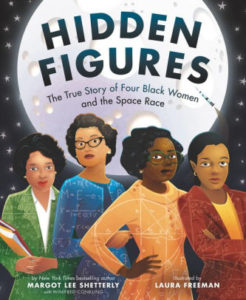
|
Margot Lee Shetterly’s Hidden Figures (William Morrow, 2016) is the wonderful story of the black women mathematicians who helped NASA win the space race. The original book is for teens and adults; there’s also a Young Reader’s edition for ages 8-12 and a picture-book version for ages 4-8.The 2016 movie Hidden Figures is rated PG. |
